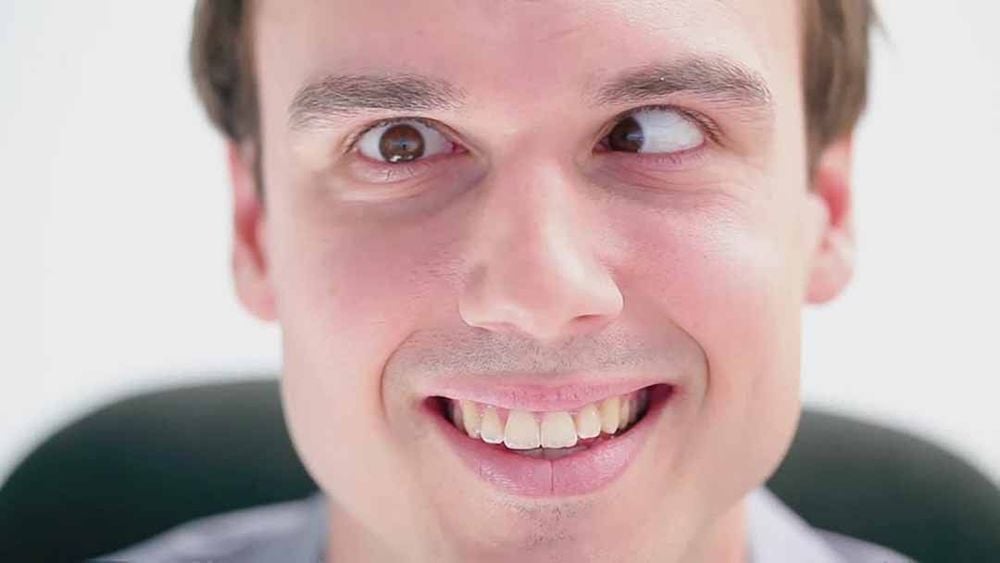This is an automatically translated article.
There are 3 nerves that affect the motor function of the eye, which is the 3rd, 4th and 6th nerve. All 3rd, 4th and 6th nerves are direct Directly controls the external motor muscles of the eyeball and the internal movement of the eyeball.
1. Structure and motor function of the eye
The eye is a sensory organ responsible for the function of vision. Eyes help people learn and perceive the surrounding environment, and also create conditions for intelligence to develop. In terms of structure, the eye consists of 3 parts as follows:
Eyeball: Called eyeball because it is spherical, if the eyeball axis is short or long, it will cause myopia or farsightedness. Normally, the eyeball has an anteroposterior diameter of about 25 mm, the upper and lower and the horizontal about 23 mm. The front is the transparent cornea, followed by the white sclera, and the inner layer of the sclera is the choroid (which is the layer with the pigment cells). Eyeball protectors: These include the eye socket (made up of the skull and facial bones); the walls of the orbit (including the upper, outer, lower and inner walls); fundus of the orbit (with an oval shape including the upper, outer, lower and inner margins); apex of the orbit (consisting of the visual hole and a V-shaped slit; the elements located in the orbit (including the ocular motor muscles, the muscles of the eyelids, the tendons in the orbit, the orbital organization); eyes (each eye has 2 eyelids, upper and lower eyelids); lacrimal gland (the part that secretes tears) Nerve line and visual center: Includes the optic nerve and the visual center in the cerebral cortex.

Mắt chính là một cơ quan cảm giác đảm nhiệm chức năng thị giác
2. Nerves affecting motor function of the eye
There are 3 nerves affecting the motor function of the eye, which is the 3rd, 4th and 6th nerve. All 3rd, 4th and 6th nerves are direct. Directly controls the external motor muscles of the eyeball and the internal movement of the eyeball.
The activities of the two eyes are always coordinated systematically and rhythmically. Therefore, the two eyes can coordinate to look up or down as well as glance to the right or to the left. All of these movements are controlled by central centers on the nucleus accumbens in the brain stem, in the midbrain, and in the cerebral cortex. Specifically, they are:
Perlia midpoints (function of convergence) Darkchwitz (vertical glance) Foville (horizontal glance) Reflex centers (in the midbrain) with quadrilateral tubercles as auditory-optical reflexes (through the midbrain) vertebral bundles), with vestibular nuclei (combination of head position and position with the position of the eyes (which explains nystagmus). The eye-turning-head-turning-center is in plane 8, the eye-turning-head-turning-visual-center near the curvature is related to area 21, other centers are in the motor area as well as 18, 19, and the hearing center Turn your eyes and turn your head on the side of the auditory area...

Hoạt động của 2 mắt luôn được phối hợp có hệ thống và nhịp nhàng
3. Paralysis of vision due to nerve damage
Paralysis of vision is the paralysis of motor coordination of the 2 eyeballs. Accordingly, when the centers of coordination of eye movement have been damaged, the function of vertical, horizontal or focal glance is paralyzed, causing the motor function of the eyes to be affected.
3.1 Convergent functional paralysis
Isolated 3rd nerve paralysis on one side: This case noticed that when the patient was resting, there was strabismus in the right eye, but the left eye was still normal. When converging vision, the patient's right eye will not be able to focus, but the left eye will still be able to. The cause is therefore peripheral damage of focal vision disorder. Aggregate functional paralysis with right 3rd cranial nerve palsy: This symptom is noticed when the patient rests with strabismus on the right side, but the eye on the left side is normal. However, if looking to the right, both eyes can see well, the left eye can glance inward, but when looking at focus, the right eye of the patient will not move, but the left eye also cannot focus. 3.2 Paralysis of glance function Vertical
Isolated paralysis of the right 3rd nerve: The levator fascia muscle is not paralyzed, but at rest, the lateral strabismus in the right and left eyes is normal. In the case of having to look up, the right eye does not move but the left eye can still look up. This is the peripheral lesion of longitudinal glance. Paralysis of vertical glance function with paralysis of the 3rd nerve: This case, when resting, has strabismus in the right eye but the left eye is still normal. However, if you look to the right, you can see but if you look to the left, the left eye can see and the right eye can't see because the right 3rd nerve is paralyzed. Especially when looking up, the right eye will not be able to see, but the left eye will not be able to see, which is due to damage to the nucleus of the vertical glance. With the same methods, it was also possible to evaluate the cases of vertical glancing function accompanied by 6th nerve palsy.

Các trường hợp liếc chức năng liếc dọc có kèm theo liệt dây thần kinh số 6
3.3 Paralysis of horizontal glance function
Isolated paralysis of right 6th nerve or left 3rd nerve: For right 6th nerve palsy, the left eye is normal but otherwise the right eye has strabismus. As for the case of looking to the right, the left eye can see, and the right eye cannot see. In the case of isolated left 3rd nerve palsy, when resting, the right eye is normal and the left eye is strabismus. Once looking to the right, the right eye can follow, but the left eye can't. Pure horizontal glancing paralysis: When the patient is at rest, there is no strabismus, there is a balance between the 3rd and 6th nerve on both sides. This means that the eyes can still focus and gaze vertically, so there is no 3rd nerve paralysis. Looking to the left is good, so the motor coordination of the right 3rd nerve nucleus and nerve normal left meridian 6. Paralysis of horizontal glance function accompanied by paralysis of one oculomotor nerve: For example, if there is paralysis of the right side vision function accompanied by paralysis of the right 6th cranial nerve, then at rest, the right eye will be strabismus, and the eye on the other side. normal left. In the case of converging eyes, the right and left eyes are both axially inward. However, if when looking vertically, the right eye still looks up but limited, while the left eye still looks up normally. Looking to the left, both eyes are normal, but if you look to the right, the right eye does not move, it may be due to paralysis of the 6th nerve. 3.4 Paralysis of the 4th nerve causes the eyes to cross
Symptoms of nerve paralysis Number 4 is often atypical, but often patients with 4th nerve paralysis have strabismus on one or both sides, but not too clearly. Accompanying strabismus is a symptom that the head is deviated to one side, and the neck is crooked. Therefore, when the 4th nerve is damaged, they will cause quite a variety of diseases.
In short, the 3rd, 4th and 6th nerves have a great influence on the eyes, so it is necessary to go to a reputable hospital to conduct examination and treatment as soon as possible. signs of paralysis of these nerves. Currently, Vinmec International General Hospital is one of the leading prestigious hospitals in the country, trusted by a large number of patients for medical examination and treatment. Not only the physical system, modern equipment: 6 ultrasound rooms, 4 DR X-ray rooms (1 full-axis machine, 1 light machine, 1 general machine and 1 mammography machine) , 2 DR portable X-ray machines, 2 multi-row CT scanner rooms (1 128 rows and 1 16 arrays), 2 Magnetic resonance imaging rooms (1 3 Tesla and 1 1.5 Tesla), 1 room for 2 levels of interventional angiography and 1 room to measure bone mineral density.... Vinmec is also the place to gather a team of experienced doctors and nurses who will greatly assist in diagnosis and detection. early signs of abnormality in the patient's body. In particular, with a space designed according to 5-star hotel standards, Vinmec ensures to bring the patient the most comfort, friendliness and peace of mind.
Please dial HOTLINE for more information or register for an appointment HERE. Download MyVinmec app to make appointments faster and to manage your bookings easily.













